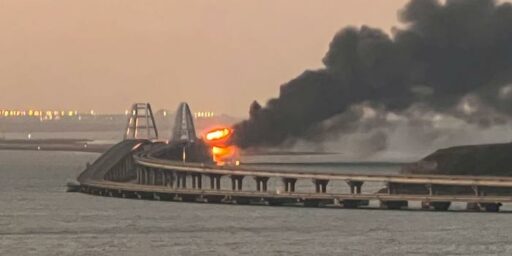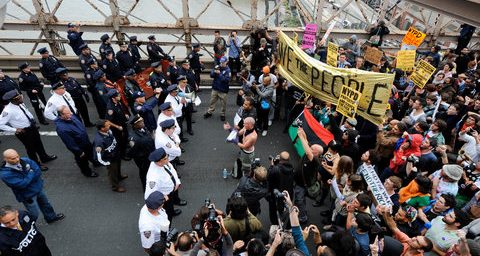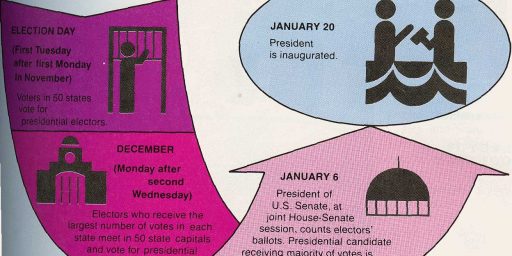Bridge Economics and Cost-Benefit Analysis
SCSU economist King Banaian wraps up a series of posts he’s written on the tragic Minneapolis bridge collapse arguing that we simply can’t make every bridge perfect and must undertake rational cost-benefit analyses to allocate scarce resources. It’s the kind of callous argument you’d expect from a man who would risk human life for the enjoyment of unmelted ice cream.






He misses the point by stopping his examination of the costs of a bridge at the inspections. Whatever else we learn about the reasons the bridge failed, it was not because there weren’t enough inspections; it was because there wasn’t enough maintenance.
As I noted in the immediate aftermath of the collapse, the problem is a failure to budget for foreseeable maintenance operations. Bridges have operating costs as well as costs to build.
You assume, Dave, that the question for what specifics on the bridge needed to be maintained, were already known. Clearly, that’s not true, if the inspections revealed nothing of import.
Also, this discussion seems to ignore that there were other factors involved with the failure. I’m convicned there was something in the loading aspect of the bridge that caused the failure, that day, that even regular That even regular maintenance would not have solved. Indeed, I’m guessing something the main its crew had been doing was the proximate cause. Consider;
The bridges lane access was already jumped to one lane. If I’m not mistaken, when they calculate bridge loading, they assume all lanes in use. By that measure, the bridge was severely under loaded. But what of the construction crew? What specifically was placed on the deck at the time of the failure?
No, I assume that there would need to be maintenance all along. The rate at which maintenance would be required varies on the load that the bridge must bear and environmental considerations.
States need capitalization funds. This stuff shouldn’t be debated over and over again.
Public policy decisions should be based more on logic like Banion uses. It could save many lives.
The money now being used to inspect bridges and later reinforce some bridges may be more wisely spent on traffic control devices or road realignment. The numbers would show many more road hazards that kill besides collapsing bridges. Unfortunately none of these things are as dramatic as a bridge collapse.
Bithead makes a good point as I have made in the past, slow down on the conclusions. We know nothing yet as to why this bridge failed. Rushing off to do something to prevent more failures is silly until we know what caused this one.
I am SO using that ice cream quote. Best laugh I’ve had today.
But on WHAT?
Forgive me if my perception is a little skewed, here… Isn’t the purpose of the inspection to see what needs maintaining?